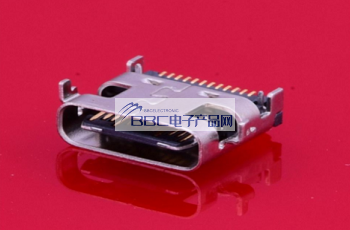Categorization:Product Information
In the case of a vehicle's smartphone interface, the USB connector is used as a transport layer to stream the phone's display content or data to the host computer. For faster charging, the USB Power Delivery (PD) specification outlines how power contracts are determined and what level of power can be delivered to consumer devices. Knowing that there are many factors that must be taken into consideration to drive the technology to the next level in order to complete the finalization of the system, there are a lot of design considerations that go into an automotive USB 3.1 connector system. The functionality of automotive infotainment systems has changed significantly over the past decade. In 2009, leading automotive publications ranked both built-in navigation systems and DVD players among the top five most important features in a car. With built-in navigation systems now obsolete due to the rise of smartphones, driver convenience features have climbed to the top. At the intersection of features lies a key technology, USB, a consumer technology that continues to export new specifications from its industry organization, the USB-IF, and system designers continue to find value in the technology. Engineers at automotive OEMs and Tier 1 suppliers have been integrating this convenience feature into their product designs for several years now. This trend is sure to continue as applications on smartphones continue to evolve, more bandwidth is provided to vehicles and consumers want to charge their electronic devices faster. While USB specifications, conformance testing and USB chips are designed to perform most of the heavy lifting, system integration of all components must be designed, including host hardware, host software and media hubs. Key considerations regarding automotive USB 3.1 connector system design are as follows: 1. Bandwidth requirements (USB 2.0 Hi-Speed or USB 3.1 SuperSpeed). 2. Need for mobile application support (need for host/device switching functionality). 3. Number and type of ports required (one, two, three, or four/ Type A or Type C). 4. Hardware interface type ( USB host or USB host/device port).5. Power level for USB charging (1.5 A, 2.0 A, 3.0 A, etc.).
 -6, on the BBC Electronic Products Network platform related to the introduction and sales of products brief: BBC Electronic Products Network - a professional agent / production / sales of a variety of {connectors | wiring harness | wire and cable products }; if you have a related [connectors | wiring harness | wire and cable products] purchasing / sourcing needs or would like to buy / to understand what connectors | harness | wire and cable product solutions that we can provide, please contact our Division below! Business personnel; If you have related [connectors | harness | wire and cable products] sales / resources and promotion needs, please click on the "→ Business Cooperation ←" and special people to discuss!
-6, on the BBC Electronic Products Network platform related to the introduction and sales of products brief: BBC Electronic Products Network - a professional agent / production / sales of a variety of {connectors | wiring harness | wire and cable products }; if you have a related [connectors | wiring harness | wire and cable products] purchasing / sourcing needs or would like to buy / to understand what connectors | harness | wire and cable product solutions that we can provide, please contact our Division below! Business personnel; If you have related [connectors | harness | wire and cable products] sales / resources and promotion needs, please click on the "→ Business Cooperation ←" and special people to discuss!